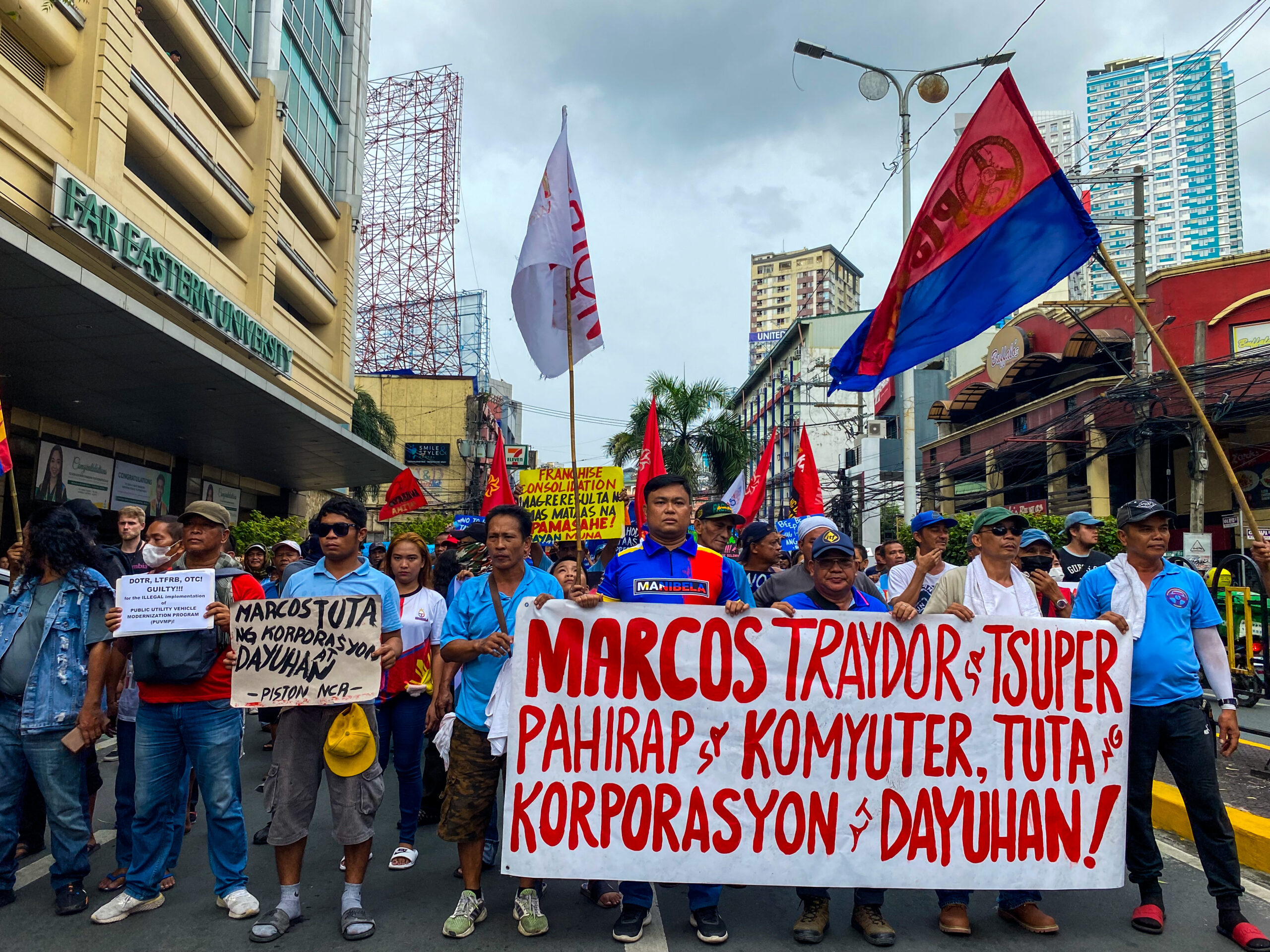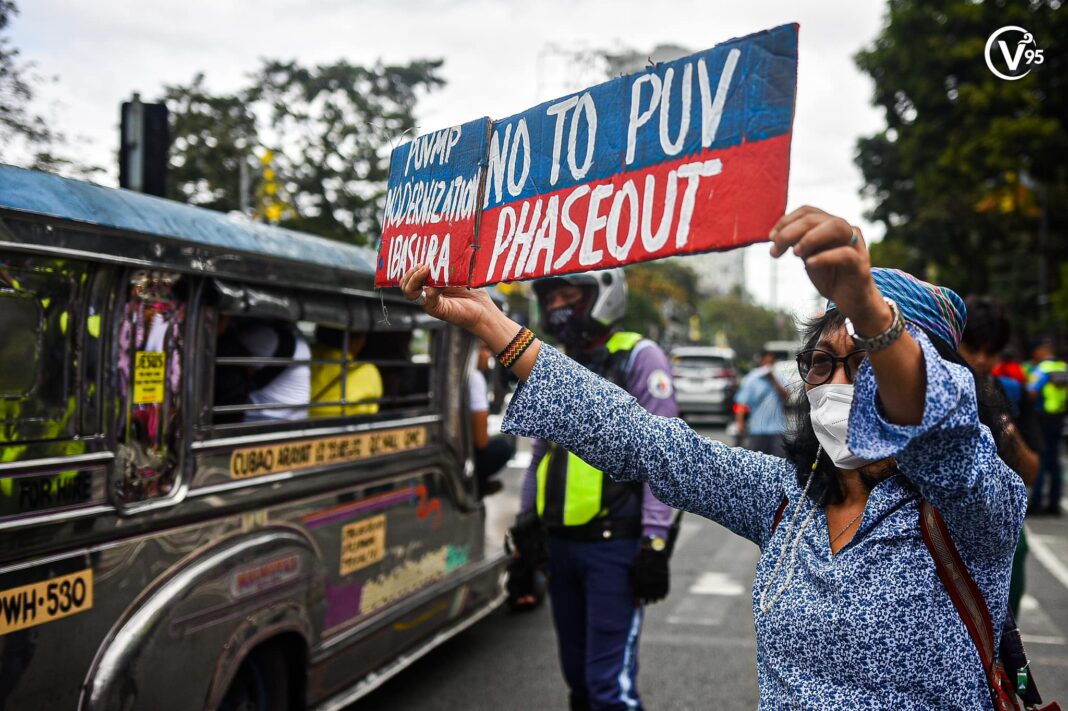As the fight to junk the Dec. 31 industry consolidation deadline dragged on to the holiday season, operators owning traditional jeepneys are not in a celebratory mood just like everybody else.
“Wala man kaming Christmas party,” Cornelio Mercado, a jeepney operator for almost four decades, told the Varsitarian. “Parang wala nga silang awa eh.”
For Parañaque-based jeepney driver Jayson Fajilagutan, 49, as non-consolidated jeepneys will be considered colorums come Jan. 1, 2024, he was left pondering on his uncertain future.
“Napakahirap kasi dito na umaasa ‘yong pamilya ko. ‘Yon lang ang hanapbuhay ko, wala nang iba,” he told the Varsitarian. “Sa ganitong edad ko, may tatanggap pa ba sa’kin na industriya?”
Drivers and operators are critical of the mandatory consolidation policy under the public utility vehicle (PUV) modernization program. It requires at least 10 drivers to form a cooperative to receive government subsidies to buy a modernized unit. The new policy set off multiple transport strikes, forcing universities, including UST, to shift classes online.
Transport groups Pagkakaisa ng mga Samahan ng Tsuper at Operator Nationwide (Piston) and Manibela will join forces for a prolonged transport strike from Dec. 18 to 29 after President Marcos stood firm on the deadline.
“We cannot let the minority cause further delays, affecting the majority of our operators, banks, financial institutions, and the public at large,” he said in a statement on Dec. 12.
The Land Transportation Office and Regulatory Board (LTFRB) said that over 70 percent of PUVs have already submitted their consolidation requirements.
Critics, however, contended that the figure also includes other types of vehicles, including buses and UV express units. The agency has yet to release a breakdown per vehicle.
The breakdown per region, though, showed that Metro Manila lags behind other regions in complying with the consolidation, with just over 25 percent of 51,984 PUV units doing so. Soccsksargen and Calabarzon have the highest consolidation rates in the country, at 100 and 91 percent, respectively.

Manibela Chairman Mar Valbuena lamented that transport groups have just been watching on the sidelines ever since former president Rodrigo Duterte introduced the program in 2017.
“Ni minsan, doon sa mga napag-usapan, hindi tayo naimbitahan para pag-aralan ‘yong PUV Modernization Program,” he told the Varsitarian on the second day of a transport strike on Dec. 15. “Hindi tayo nakasama sa pagbalangkas nito. Puro pangako at puro pag-aaral ang mga isinasagot sa atin.”
Locally-produced modernized units – complete with air conditioning and CCTV cameras – could cost between P1.5 million and P2 million, according to Ed Sarao, the production and plant supervisor of Sarao Motors, one of the first jeepney manufacturers in the Philippines. The price tag for imported units, however, could reach up to nearly P3 million, said Valbuena.
Some jeepney drivers couldn’t take the hefty price of a new vehicle.
“Papaano mo mababayaran ‘yon sa ganoong halaga?” five-decade jeepney driver Alfredo Sison told the Varsitarian. “‘Yong prangkisa mo, sila na ‘yong may hawak. Kung hindi ka nakabayad, wala ka nang prangkisa. Wala ka nang sasakyan. Pati apo mo, mamamatay na lang din na may binabayaran.”
After Dec. 31, drivers and operators have two to three years to modernize their fleets. They are then given up to seven years to repay the loans provided by the government.
The LTFRB loosened some restrictions to accommodate concerns from drivers following a two-hour dialogue with Piston President Mody Floranda on Dec. 14. Traditional jeepneys need only rehabilitation and pass roadworthiness inspections to avoid phaseout.
“Hindi po sapilitan ang pagbili ng modernized jeepneys,” LTFRB spokesperson Celine Pialago said in a statement. “Makakabiyahe po ang traditional jeepneys as long as roadworthy po ito.”
Floranda challenged the agency to issue an executive order stipulating that particular concession.
Overall, the modernization program could pose a “domino effect” on the cost of living for Filipinos. A 2021 discussion paper by Prof. Teodoro Mendoza of the University of the Philippines Center for Integrative and Development Studies argued that the expensiveness of a unit coupled with a tight amortization schedule might lead to increased fare prices that would ultimately hurt commuters.
“An increase in passenger fares means higher costs of living, as it will translate to higher transport costs of food and other commodities from producers to consumers,” Mendoza wrote. “Higher fares will also mean higher transport costs per family or household.”
“In effect, higher transport costs will mean a higher cost of living. A consequence of this is that daily wage earners will demand higher wages, which will have repercussions on the economy at large.” With reports from Jose Gabriel V. Ignacio


















